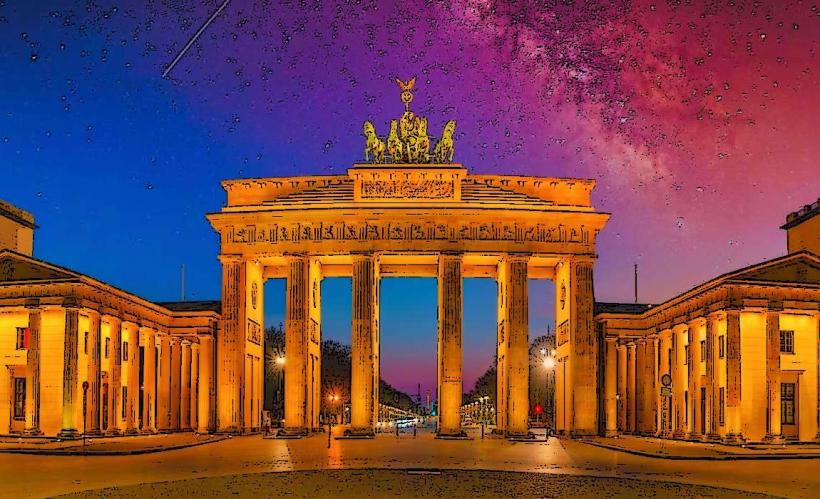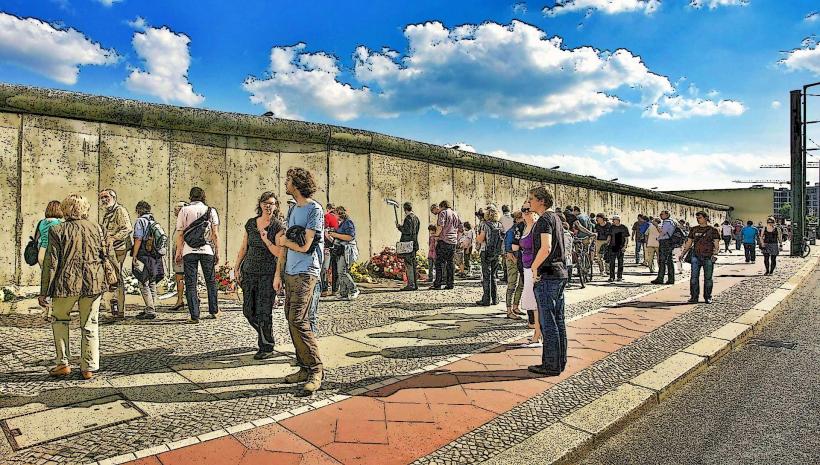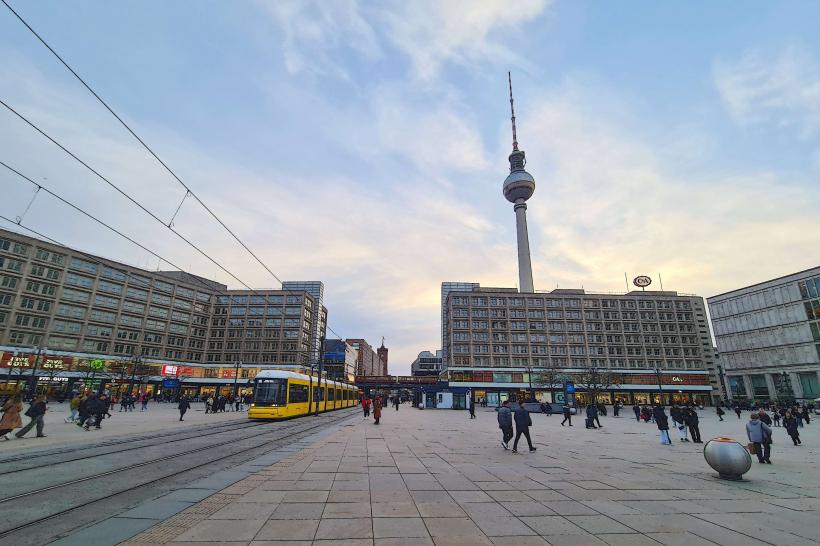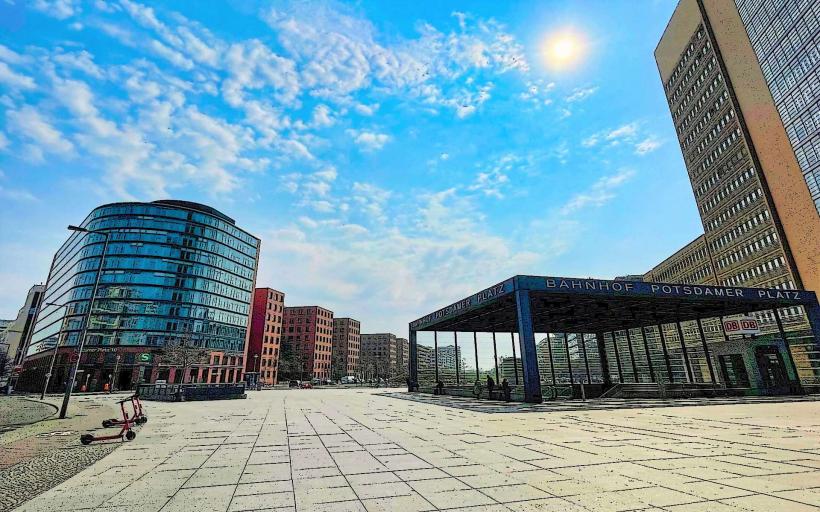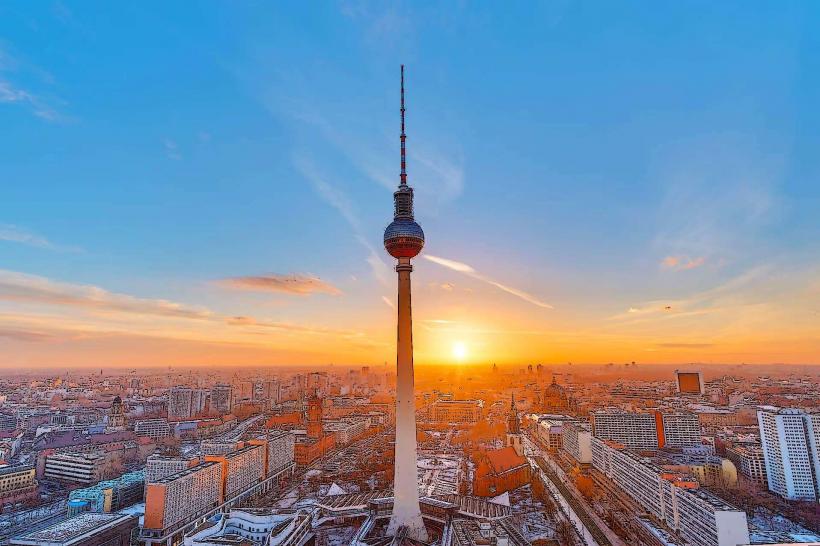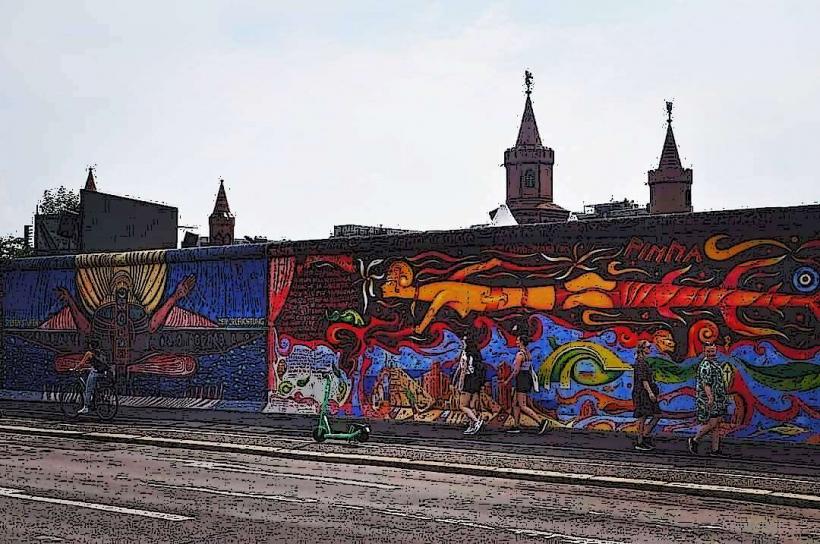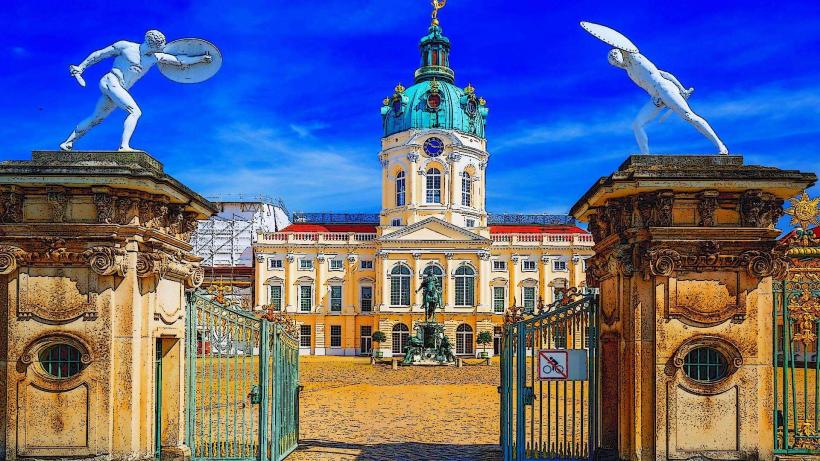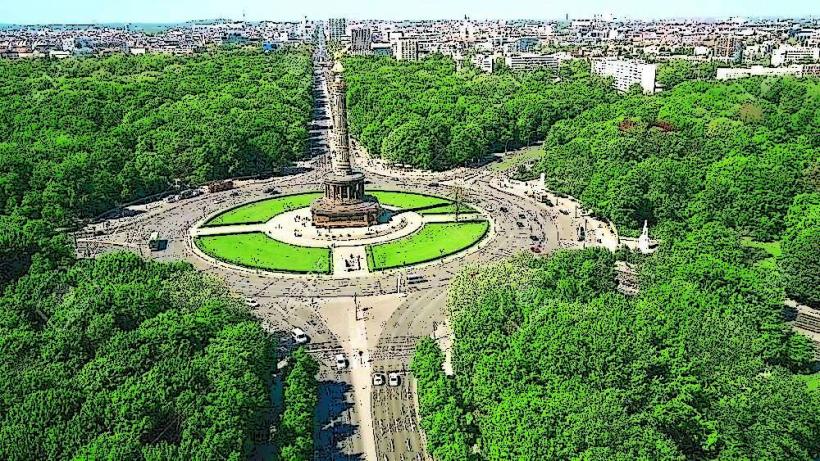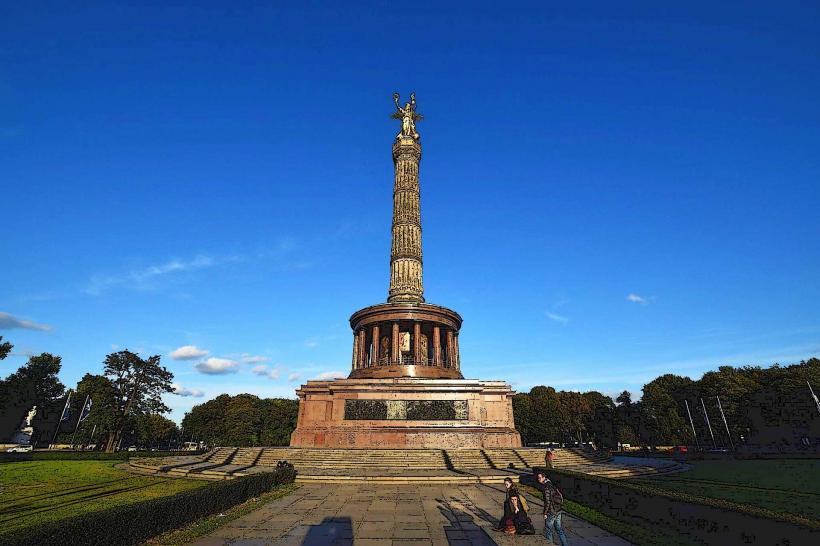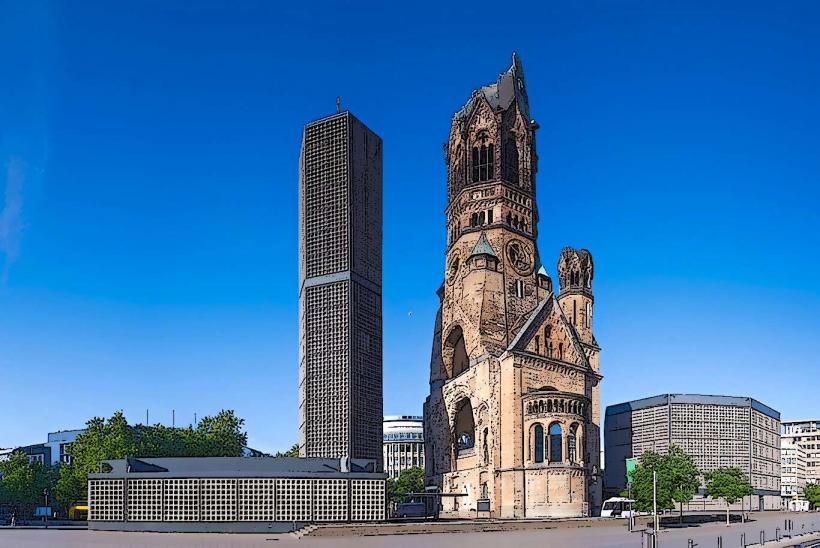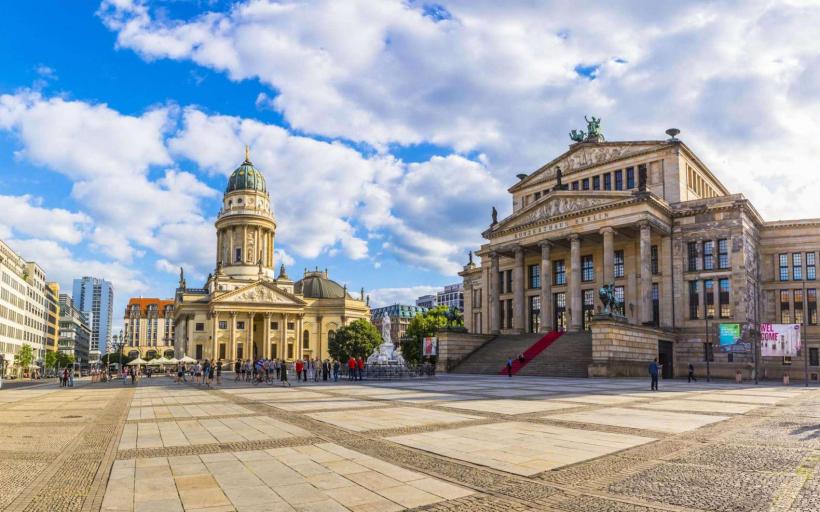Information
Landmark: Museum IslandCity: Berlin
Country: Germany
Continent: Europe
Museum Island (Museumsinsel) is one of the most important cultural and historical hubs in Berlin, Germany. Located on the Spree River in the heart of the city, it is home to a collection of world-renowned museums that showcase some of the finest art, archaeology, and cultural artifacts from around the globe. Museum Island is a UNESCO World Heritage site, and it represents a significant cultural center not just for Berlin, but for Europe as a whole.
1. History of Museum Island
- Origins: The history of Museum Island dates back to the early 19th century, when the King of Prussia, Friedrich Wilhelm II, decided to create a space for Berlin’s burgeoning art collections. The idea was to consolidate the city’s art collections in a single, central location. Over the next several decades, several monumental museums were constructed, gradually transforming the island into a cultural complex.
- Development: The island was designed to serve as a cultural and intellectual center, housing the royal collections of the Hohenzollern dynasty. Many of the museums were built in the Neoclassical and Renaissance Revival styles, which were popular during the time. Museum Island became an intellectual and artistic focal point in Berlin, attracting scholars, artists, and visitors from all over Europe.
- UNESCO World Heritage Status: In 1999, Museum Island was designated a UNESCO World Heritage site due to its exceptional cultural significance. This recognition has helped preserve its status as one of the most important cultural landmarks in the world.
2. The Museums on Museum Island
Museum Island is home to five of Berlin’s most prominent museums, each offering unique collections and insights into different aspects of human history, art, and culture. These museums are interconnected by a series of pedestrian pathways that make it easy for visitors to move from one museum to the next.
1. Pergamon Museum
- Overview: The Pergamon Museum is one of the most visited museums on Museum Island and is renowned for its impressive collection of ancient art and artifacts, particularly from the civilizations of the Near East, Egypt, and Greece.
- Highlights: The museum’s most famous exhibit is the Pergamon Altar, an ancient Greek monument that was unearthed in Asia Minor. The altar is famous for its detailed and monumental frieze depicting the gods’ battle with the giants. Another highlight is the Ishtar Gate of Babylon, one of the Seven Wonders of the Ancient World, which has been reconstructed and stands proudly in the museum. Visitors can also explore the Market Gate of Miletus, the Mshatta Façade from Jordan, and numerous artifacts from ancient Mesopotamia and Persia.
2. Altes Museum
- Overview: The Altes Museum (Old Museum) is the oldest of the museums on Museum Island and is housed in a grand neoclassical building designed by the architect Karl Friedrich Schinkel. It was completed in 1830 and was originally intended to display the art collections of the royal Prussian family.
- Highlights: The Altes Museum is home to an extensive collection of Classical antiquities, including Greek, Etruscan, and Roman art. The museum’s highlights include Greek sculptures, Roman portraits, ancient pottery, and coins. One of the most famous pieces is the Antikythera Mechanism, an ancient Greek analog computer used to predict astronomical positions and eclipses.
3. Bode Museum
- Overview: The Bode Museum is an iconic museum that specializes in sculpture, Byzantine art, and coins. The museum was designed by the architect Wilhelm von Bode, and its opening in 1904 coincided with Berlin’s rise as an intellectual and artistic capital.
- Highlights: The Bode Museum houses an extensive collection of European sculptures, including works from the Middle Ages to the Baroque period. A major attraction is the Byzantine Art Collection, which features stunning icons, mosaics, and religious artifacts from the Byzantine Empire. The museum is also home to the Coin Cabinet, which contains one of the most important collections of coins and medals in Europe.
4. Neues Museum
- Overview: The Neues Museum (New Museum) was built between 1843 and 1855 and is a masterpiece of Neoclassical architecture. The museum was severely damaged during World War II and remained closed for decades. It was eventually restored and reopened in 2009.
- Highlights: The Neues Museum is renowned for its Egyptian collection, including the famous Bust of Nefertiti, a masterpiece of ancient Egyptian art. Other significant exhibits include mummies, ancient Egyptian artifacts, and Greek antiquities. The museum also houses Prehistory and Early History collections that include artifacts from Stone Age Europe, as well as Etruscan and Roman collections.
5. Alte Nationalgalerie
- Overview: The Alte Nationalgalerie (Old National Gallery) is the museum dedicated to 19th-century art, with an emphasis on Romanticism, Impressionism, and Early Modernism. It is housed in a majestic building designed by the architect Friedrich August Stüler.
- Highlights: The Alte Nationalgalerie’s collection includes masterpieces by renowned artists such as Caspar David Friedrich, Adolf Menzel, Édouard Manet, and Claude Monet. One of the most famous works in the collection is Friedrich’s iconic Wanderer above the Sea of Fog, a symbol of Romanticism. The gallery also houses paintings by German, French, and Russian artists from the 19th century.
3. The Architecture of Museum Island
The architectural styles on Museum Island are varied but united by their grand, classical designs. Much of the island’s architectural development took place under the guidance of Karl Friedrich Schinkel, who designed several of the early museum buildings. The Pergamon Museum, Bode Museum, and Neues Museum are some of the most significant examples of Neoclassical architecture, featuring monumental facades, grand entrances, and colonnaded structures. The Altes Museum and Alte Nationalgalerie also embody classical design elements with harmonious proportions and elegant facades.
The reconstruction efforts following World War II were guided by the need to preserve the cultural heritage of the island while updating the museums to meet modern needs. The Neues Museum and the Pergamon Museum underwent extensive renovations, while modern museum spaces and amenities were added to enhance the visitor experience.
4. Visiting Museum Island
- Museum Pass: One of the best ways to explore Museum Island is by purchasing a Museum Pass Berlin, which provides access to all five museums on the island. The pass allows visitors to experience the rich diversity of collections, from ancient civilizations to modern art, in one convenient ticket.
- Museum Island Tour: Visitors can take a guided tour of the museums, or explore them independently. The island’s compact layout makes it easy to visit multiple museums in one day, and most of the museums offer audio guides or digital guides in various languages to enhance the experience.
- Events and Exhibitions: Museum Island hosts special events, exhibitions, and cultural festivals throughout the year. These events often focus on art, history, and cultural heritage, providing an opportunity for deeper engagement with the exhibits.
5. Nearby Attractions
- Berlin Cathedral (Berliner Dom): Directly next to Museum Island, the Berlin Cathedral is a stunning example of Baroque architecture and is one of the most significant religious buildings in the city.
- Brandenburg Gate: A short walk from Museum Island, the Brandenburg Gate is one of Berlin’s most iconic landmarks and a symbol of Germany’s reunification.
- Alte Nationalgalerie (Old National Gallery): As part of Museum Island, this museum houses a collection of 19th-century European art.
- Berlin Palace: Across the river from Museum Island, the Berlin Palace is being reconstructed as part of the Humboldt Forum, a new cultural center that will complement the island’s existing museums.
6. Conclusion
Museum Island is a must-see destination for anyone interested in exploring the cultural and artistic heritage of Berlin. With its five world-class museums, stunning architecture, and rich history, it offers a unique and immersive experience. Whether you are fascinated by ancient civilizations, classical art, or 19th-century masterpieces, Museum Island is a place where history, culture, and art come together to create a truly unforgettable experience.

